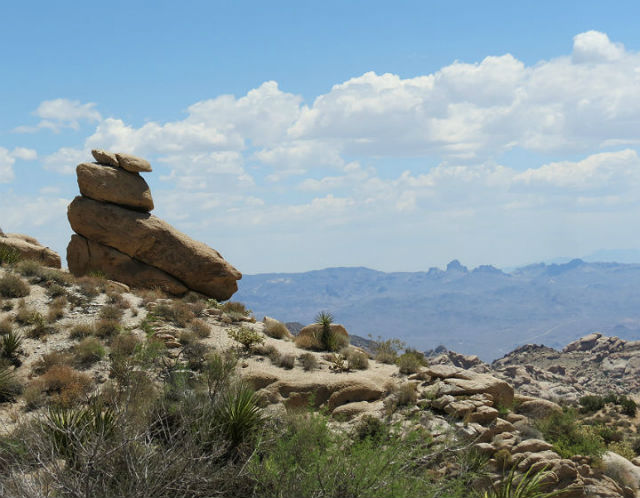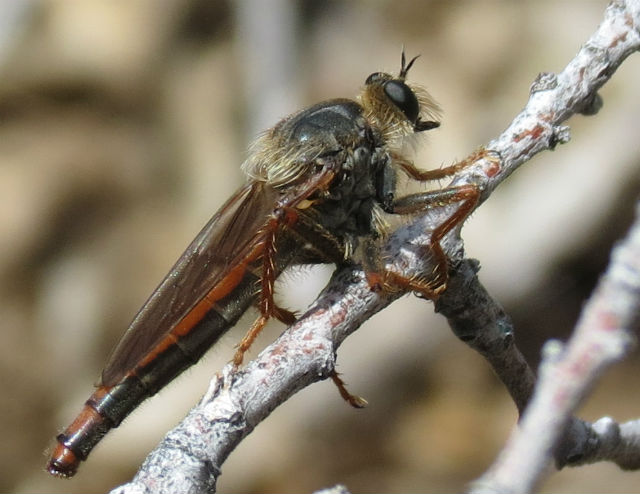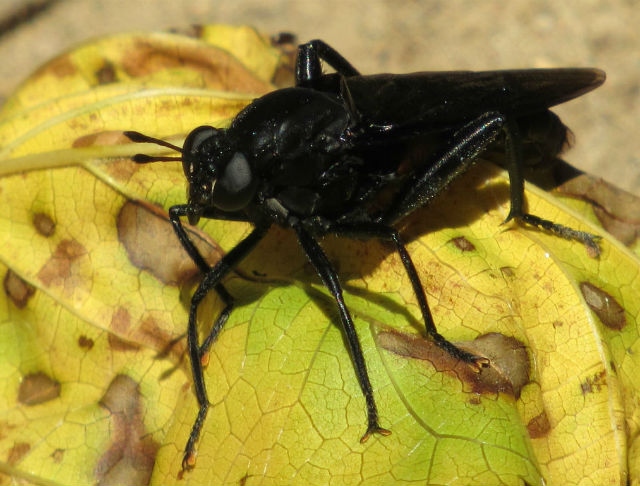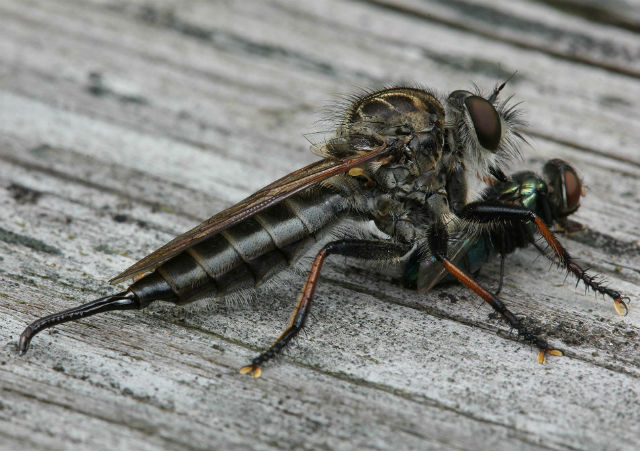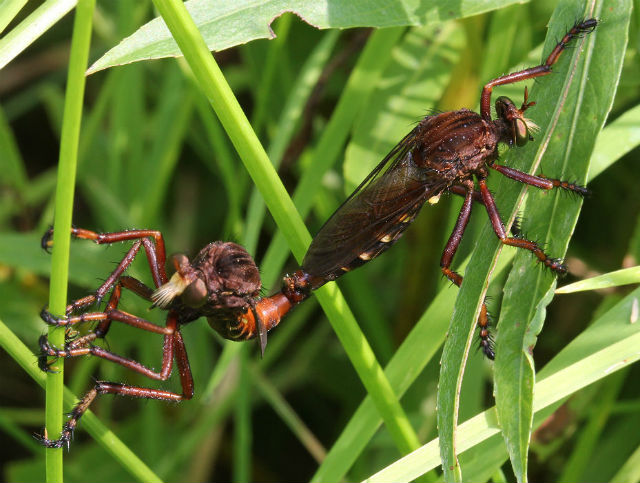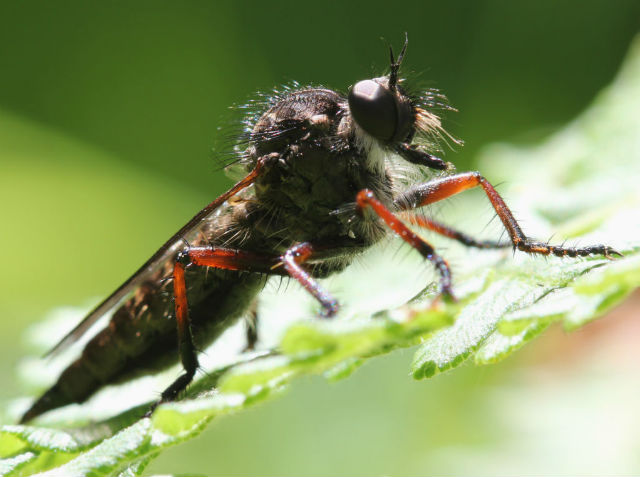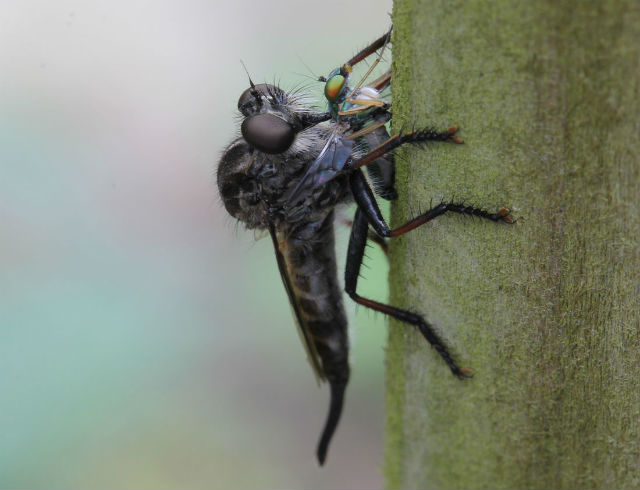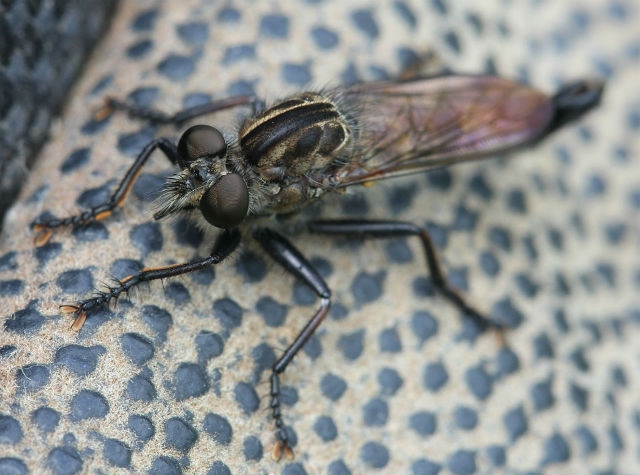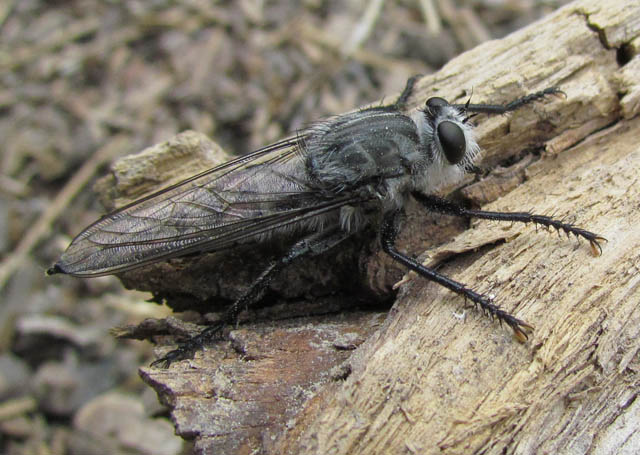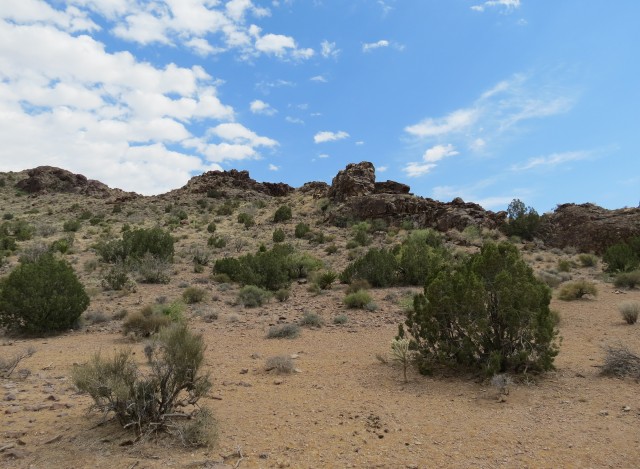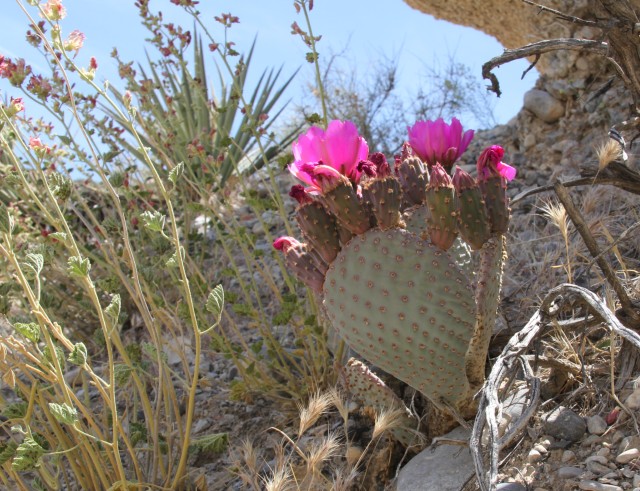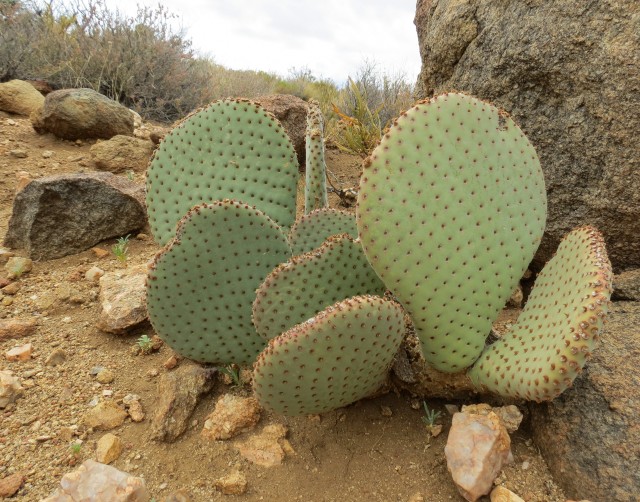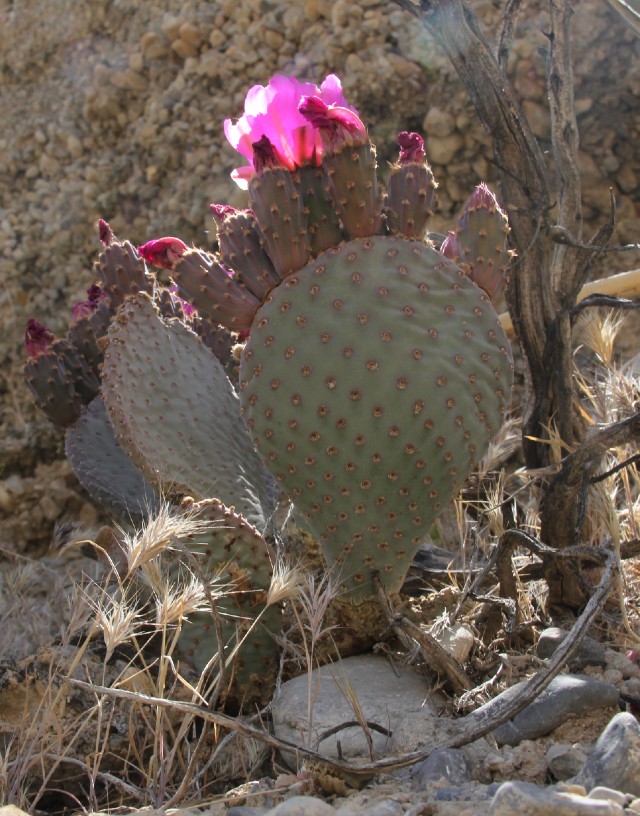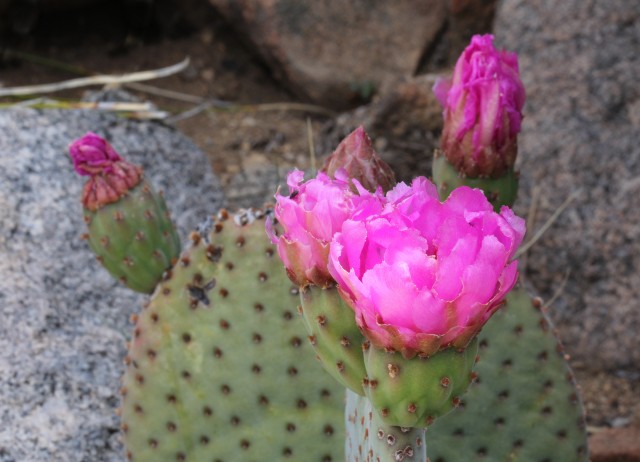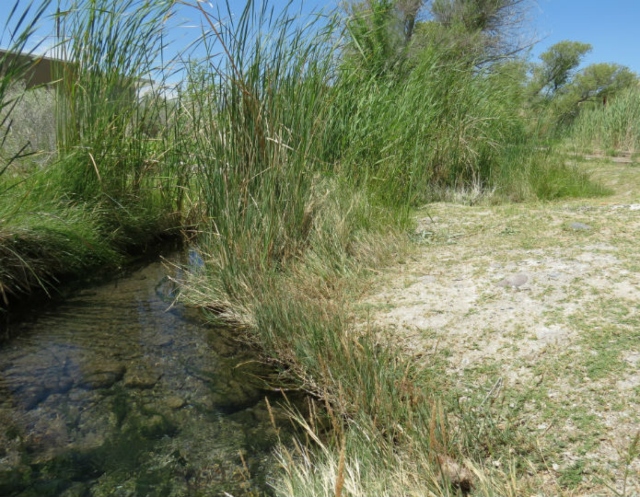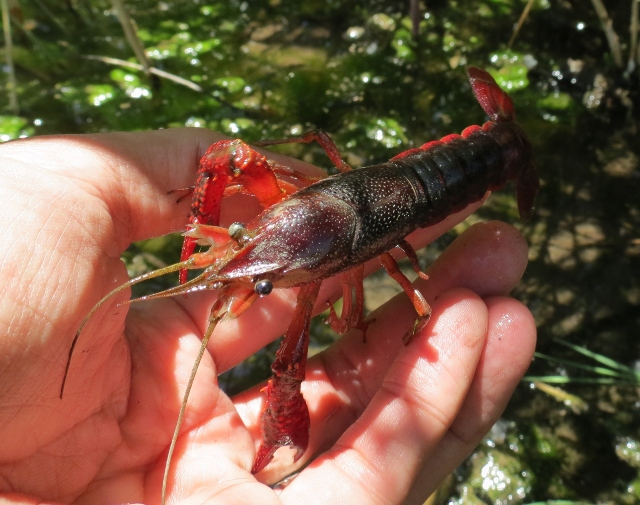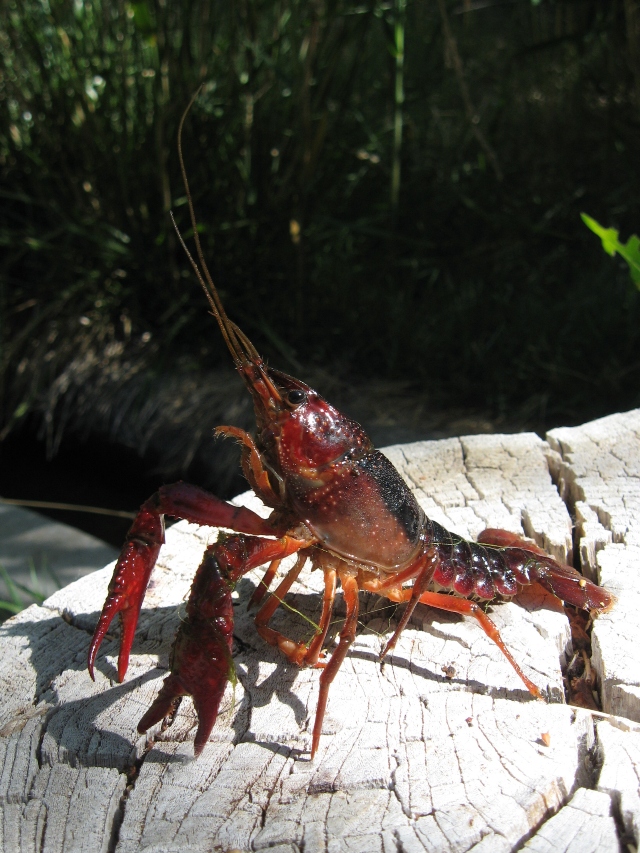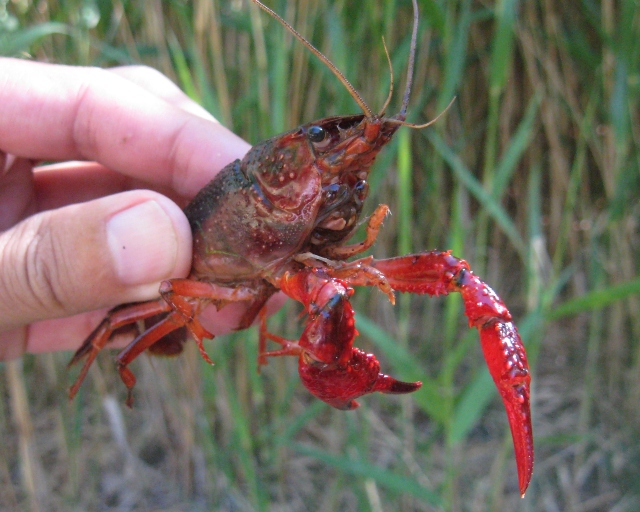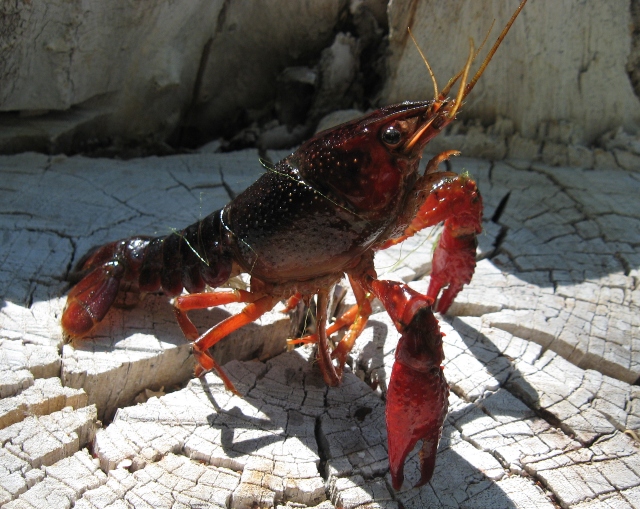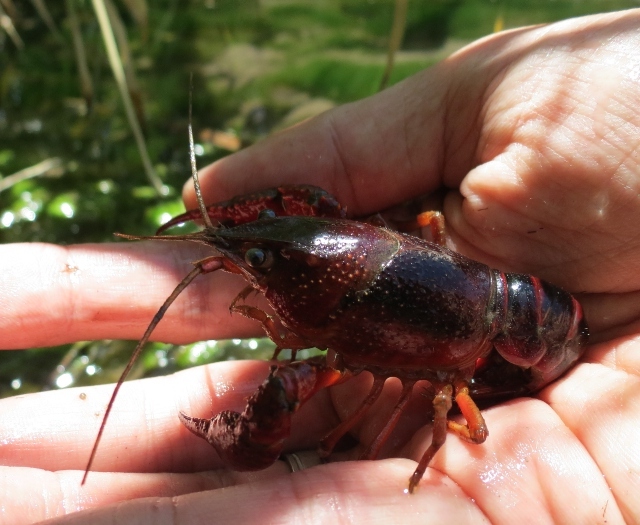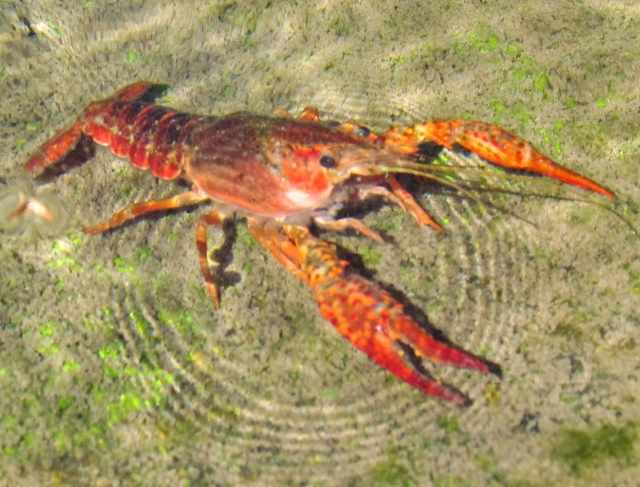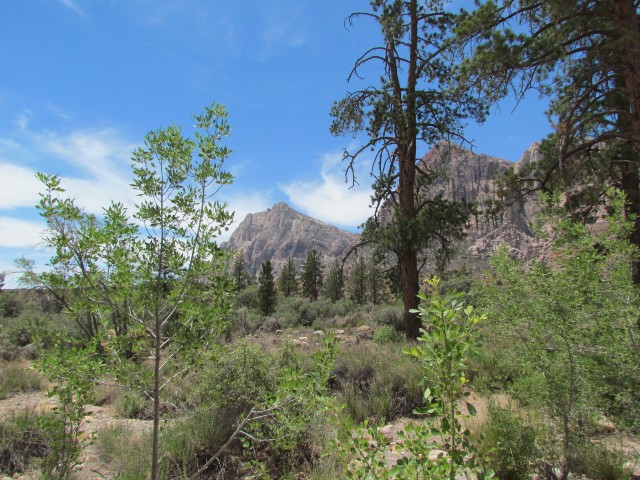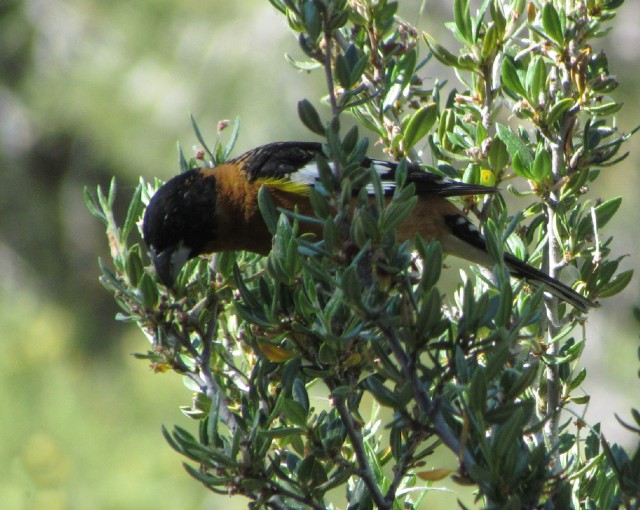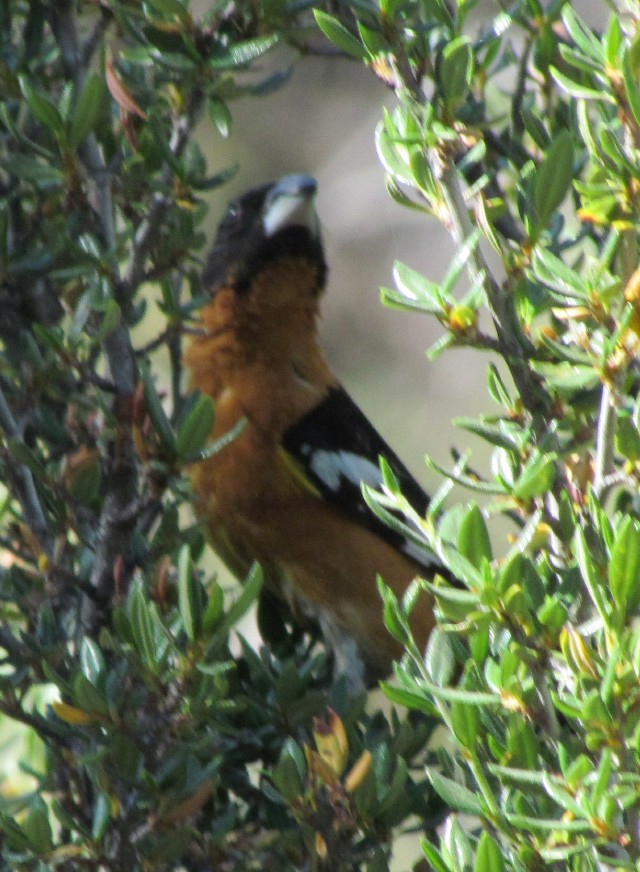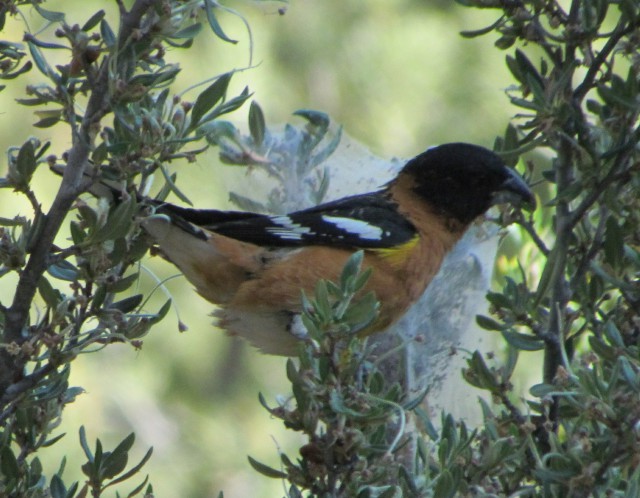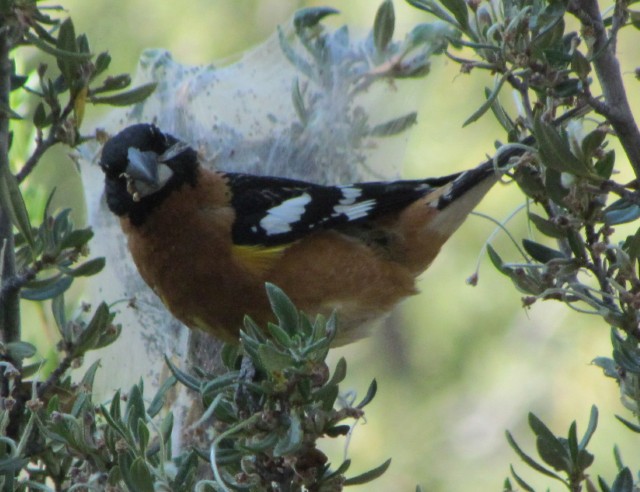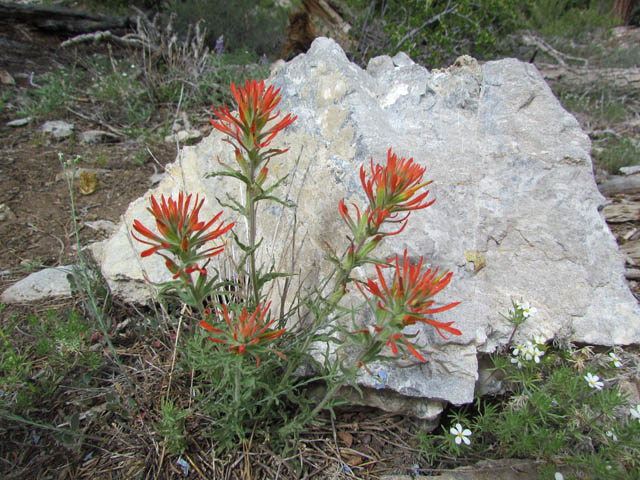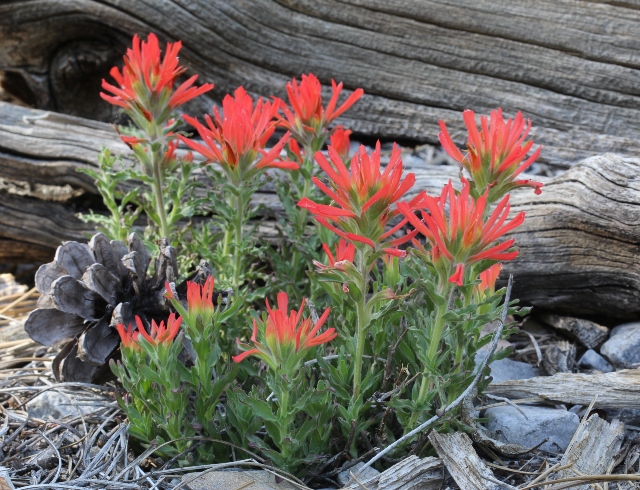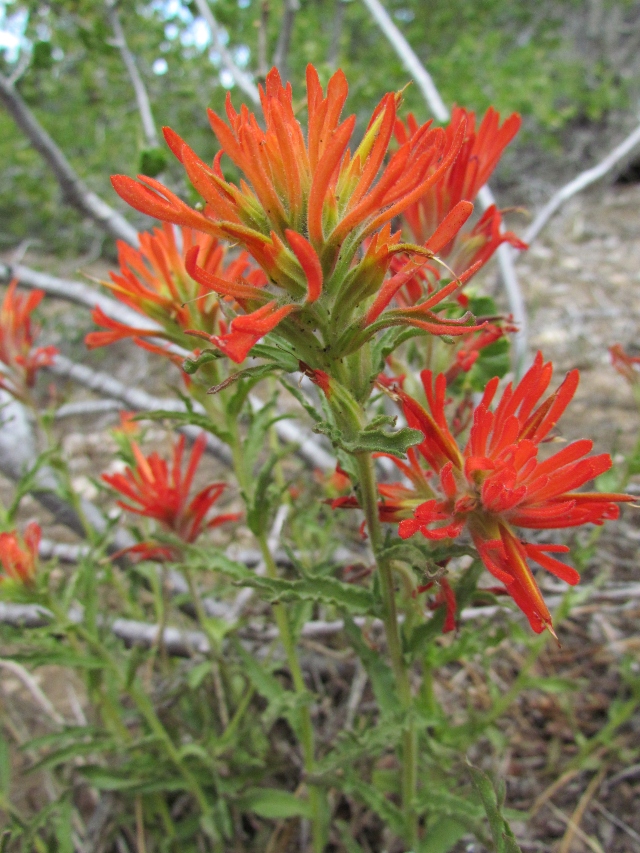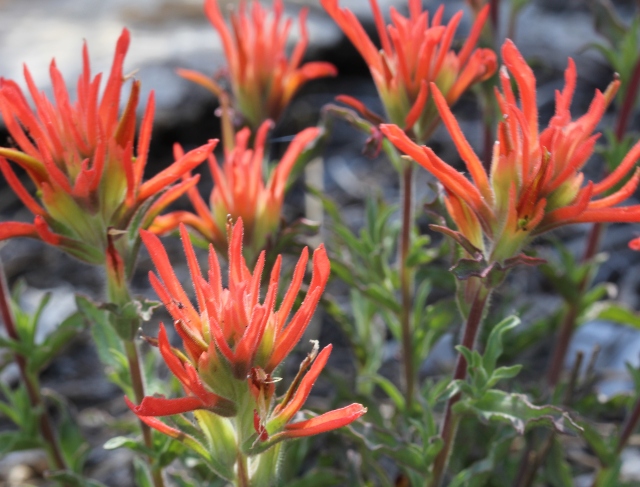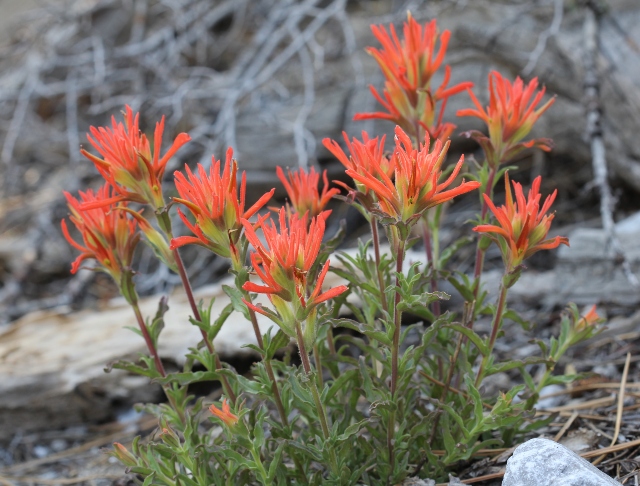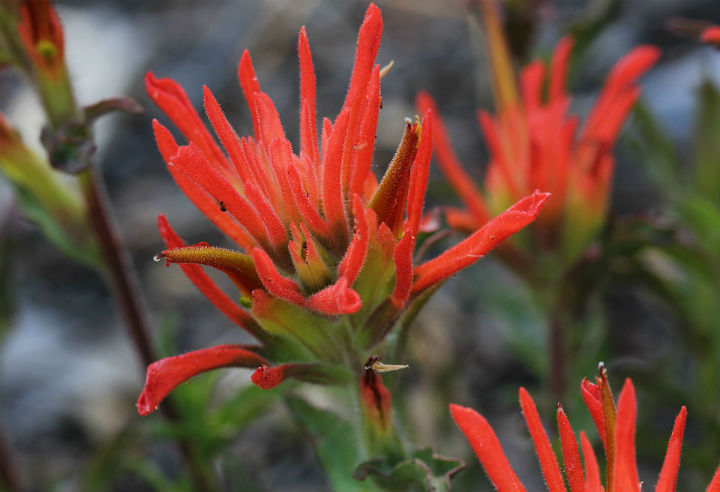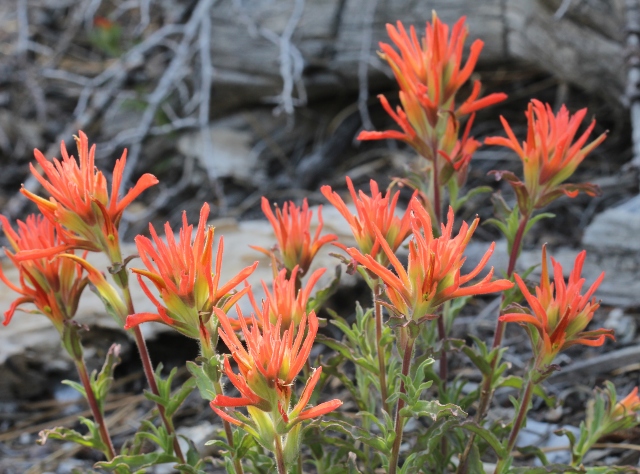I have seen this cool insect from as close as just outside my back door, to both the East Coast and West Coast – and a number of places in between.
Also known as “Assassin Flies,” their common name reflects their aggressive predatory behavior; they feed mainly on other insects that they catch in flight.
Robber Flies are powerfully built. They attack their prey by stabbing it with their short, strong, pointed tubular mouthpart. They have long, strong legs that are bristled to aid in capturing prey.
The mouthpart, known as a proboscis, injects the victim with saliva containing neurotoxic and proteolytic enzymes which very rapidly paralyze the prey and soon digest the insides. The Robber Fly then sucks the liquefied material through its proboscis.
These creatures hunt a very wide range of prey, including other flies, beetles, butterflies and moths, bees, ants, dragonflies and damselflies, wasps, grasshoppers and some spiders.
Robber Flies often establish a “perching zone” in which to locate potential prey. The height of the perch may vary, but they are generally in open, sunny locations.
Though they vary widely in appearance, Robber Flies have a characteristic divot on top of the head, which is located between their especially prominent compound eyes.
Different species vary in appearance and some types mimic wasps and bees. Most species are gray-to-black and have a long, narrow, tapering abdomen containing segments that may be banded or contrasting in color.
It is fun to come across the many different types of this very interesting invertebrate wherever I go.

